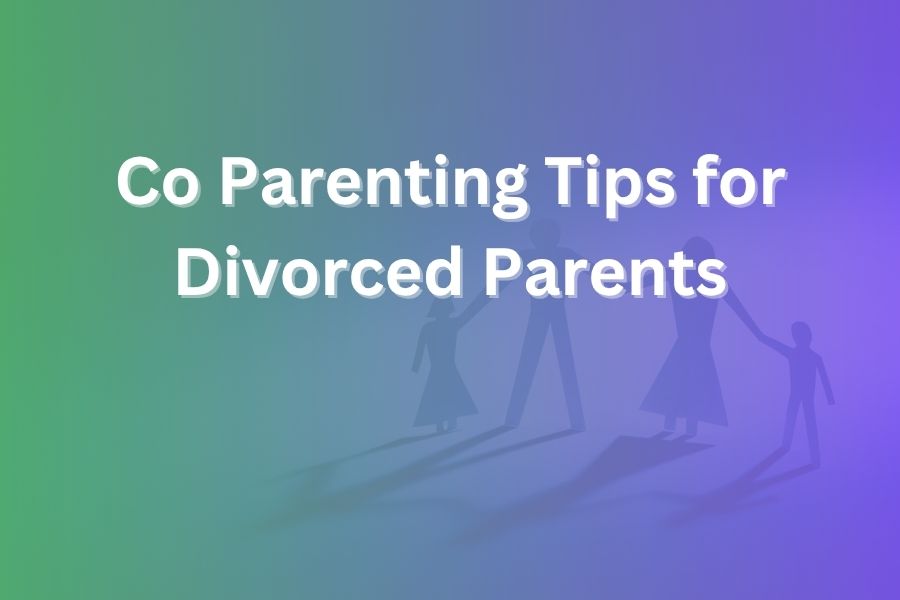Co-parenting after separation poses a unique set of challenges, but with the right approach, you can help your children thrive. When you act intentionally, stay child-centered and maintain respect and communication, you provide your kids with stability and love despite the change.
In this article you will learn how to create a strong co-parenting foundation, practical strategies for reducing conflict, tools for keeping the focus on your children, and how to adapt your approach over time in this article
Understanding Co-Parenting and Why It Matters
When you divorce or separate, parenting is not over — the relationship between you and the other parent takes on a new form. The goal is to move from a romantic partnership to a parenting partnership that keeps your child’s needs front and centre. Children whose parents cooperate tend to adjust more successfully to the new normal, show better emotional health and perform better in school.
Maintaining consistency between homes, ensuring both parents remain involved and reducing conflict helps your child feel secure. If you let resentment, anger or mixed messages take over, your child can experience anxiety, behavioural issues or confusion about where they stand.
Set the Stage for Success: Your Co-Parenting Foundation
- Choose to be a committed co-parent
Decide clearly that your main role now is to raise your child in partnership, even if your relationship with your ex is no longer romantic. That means you shift your mindset from spouse to co-parent, with shared responsibility for your children’s well-being.
- Make the child your North Star
Every major decision, every conversation with your co-parent, every rule in each home should link back to “what is best for the child”. Keep yourself grounded in that principle.
- Build a written co-parenting plan
Co-parents who create and agree on a detailed plan benefit from clarity and predictability. This plan should cover time-sharing, decision making (education, health, activities), communication methods and how you’ll handle changes.
- Communicate in a respectful, business-like way
Treat discussions with your ex as if you were colleagues working on the same project: the child. Use neutral, clear language. You don’t have to like your ex, but you must respect their role. Keep sarcasm, insults and indirect messaging out of your communications.
- Protect your child from conflict
Never put your child in the middle. Don’t talk badly about their other parent in front of them. Don’t use your child as a messenger or to monitor what the other parent is doing. Shield your child from the adult emotions.
Key Co-Parenting Practices You Can Implement Now
Maintain consistency across both homes
- Agree on basic rules such as bedtime, homework, screen-time and bed routines so your child doesn’t feel like they are living under completely different systems.
- Keep the schedule reliable. When time with one parent suddenly changes without notice, the child loses a sense of stability.
- Align consequences for misbehavior. If your child breaks a rule at one home, follow through at the other if appropriate.
Communicate and coordinate proactively
- Choose one primary mode of communication (email, text, app) for clarity and records.
- Always discuss major events in advance: new friends, sports teams, school changes or medical issues.
- Use “I” statements (“I’m concerned that…”) rather than “you” statements to avoid triggering defensiveness.
- Limit in-person or phone chats for anything critical. Reserve phone or live talk for deeper issues and use written form for routine updates.
Flexibility balanced with boundaries
Flexibility is essential because life changes: your child advances in school, sport schedules shift, one parent travels for work. At the same time, boundaries help govern how adjustments happen. For example, request schedule changes in writing, negotiate ahead of time and agree on how last-minute changes are handled.
Support your child’s relationship with the other parent
- Encourage your child to feel connected with their other parent: affirm moments they enjoy while away from you, ask questions like “What did you and Dad do?”
- Share information with the other parent: school events, health updates, extracurricular changes. Don’t assume they’ll get it on their own.
- If your ex has different parenting styles, focus on needs over preferences. It’s okay if every rule isn’t identical, as long as your child feels safe and supported in both homes.
Resolve disagreements constructively
You and your co-parent will disagree. That conflict is normal. What matters is how you handle it:
- Pick your battles. Not every difference needs to be escalated. Ask: “Will this matter to the child?”
- When issues escalate, consider a mediator or third-party coach to keep communication on track.
- Never argue in front of your child. Don’t use your child to relay messages.
- Apologize when appropriate. A genuine apology signals respect for the co-parenting relationship and models maturity for your child.
Special Situations and Adjustments
When you don’t get along with your ex
You may not be friends and that is okay. You still must collaborate. If face-to-face communication fails, use neutral apps or tools with shared calendars. Limit personal interaction and keep communication functional and focused.
Handling special days and holidays
Birthdays, religious holidays and vacations can magnify tension. Plan ahead. Alternate years or split the day. Create new rituals and coordinate with your co-parent so your child doesn’t feel caught in the middle.
When children move between two homes
Transitions can stress your child. Make pick-up and drop-off routines calm and predictable. Keep essentials in one bag or set of items at each home to reduce change-over anxiety.
Aging children and changing needs
As children grow, their needs change. Teenagers require different schedules, privacy, communication. Revisit your plan annually. Ask your child how they feel about time arrangements and make adjustments together when feasible.
Benefits of Effective Co-Parenting
When you invest in a healthy co-parenting relationship you provide your child with:
- Emotional stability and the confidence of consistent parental support
- Reduced anxiety and better academic and social outcomes
- A model of respectful adult relationships and problem-solving
- Full access to both parents, fewer feelings of loss, exclusion or divided loyalty
Practical Checklist for Daily Co-Parenting Success
- Set a weekly check-in with your co-parent to share schedules and upcoming events
- Use a shared calendar app (with school events, pickups, sports)
- Keep communications about the child separate from other emotional baggage
- When a scheduling change is needed, request early and document the agreement
- After each visit, briefly update the other parent on how things went
- When you feel angry, pause before responding — give yourself time to choose words
- Remind your child consistently: “You can love both of us and both homes.”
Conclusion
You can build a strong, stable family system after divorce even though the relationship between you and your ex has changed. The choice to co-parent intentionally, the commitment to your child’s best interest, the consistent communication and a respectful attitude all combine to create a healthy environment for your child.
When you put aside past hurts and keep your focus on the present and future needs of your children, you give them the gift of support and serenity. Remember that co-parenting is a lifelong project. It evolves as your kids grow. Stay flexible, stay respectful and stay child-focused. Your children deserve nothing less.
Robert Stewart is a seasoned law blog writer with a passion for translating complex legal concepts into accessible, informative content. With a keen eye for detail and a knack for storytelling, Robert crafts engaging articles that educate and empower readers in the realm of law.
Drawing upon his extensive experience in the legal field, Robert brings a wealth of knowledge to his writing, covering a diverse range of topics including personal injury, family law, criminal defense, and more. His articles combine thorough research with clear, concise language, making them valuable resources for both legal professionals and laypeople alike.


